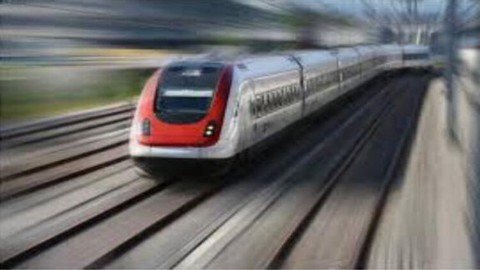
Last updated 5/2021
MP4 | Video: h264, 1280x720 | Audio: AAC, 44.1 KHz
Language: English | Size: 1.05 GB | Duration: 0h 57m
Uniform Motion And Non-Uniform Motion, Speed With Direction, Rate of Change of Velocity, Graph Representation of Motion
What you'll learn
Motion is a change of position; it can be described in terms of the distance moved or the displacement. The motion of an object could be uniform or non-uniform depending on whether its velocity is constant or changing. The speed of an object is the distance covered per unit time, and velocity is the displacement per unit time. The acceleration of an object is the change in velocity per unit time. Equations of Motion.
Requirements
None
Description
In everyday life, we see some objects at rest and others in motion. Birds fly, fish swim, blood flows through veins and arteries and cars move. Atoms, molecules, planets, stars and galaxies are all in motion. We often perceive an object to be in motion when its position changes with time. However, there are situations where the motion is inferred through indirect evidences. For example, we infer the motion of air by observing the movement of dust and the movement of leaves and branches of trees. The phenomena of sunrise, sunset and changing of seasons is due to the motion of the earth.An object may appear to be moving for one person and stationary for some other. For the passengers in a moving bus, the roadside trees appear to be moving backwards. A person standing on the road–side perceives the bus along with the passengers as moving. However, a passenger inside the bus sees his fellow passengers to be at rest.Most motions are complex. Some objects may move in a straight line, others may take a circular path. Some may rotate and a few others may vibrate. There may be situations involving a combination of these. In this Course, we shall learn to describe the motion of objects along a straight line. We shall also learn to express such motions through simple equations and graphs.
Overview
Section 1: Motion as a change of position described in terms of distance moved/displacement
Lecture 1 Introduction to Motion Along a Straight Line
Lecture 2 Uniform Motion and Non-Uniform Motion
Lecture 3 Speed With Direction, Velocity and Acceleration
Lecture 4 Graphical Representation of Motion and Equations of Motion
Lecture 5 Revision of the Key Learnings of 'Motion'
Research Scholars and Post Graduate/Under Graduate Students of Science and General Public Desirous of Knowledge Development.
Homepage
https://www.udemy.com/course/bodies-in-motion/
https://rapidgator.net/file/24676e59d70a6a98d51cdee91fd01adc/iswae.Laws.Of.Motion.Explained.In.Easy.To.Understand.Manner.part1.rar.html
https://rapidgator.net/file/01c2302b1aba30cfb91c6a029fac5cbf/iswae.Laws.Of.Motion.Explained.In.Easy.To.Understand.Manner.part2.rar.html

https://nitro.download/view/599539C00A63197/iswae.Laws.Of.Motion.Explained.In.Easy.To.Understand.Manner.part1.rar
https://nitro.download/view/1071E356B40C7E7/iswae.Laws.Of.Motion.Explained.In.Easy.To.Understand.Manner.part2.rar

https://uploadgig.com/file/download/38c9c68F00393186/iswae.Laws.Of.Motion.Explained.In.Easy.To.Understand.Manner.part1.rar
https://uploadgig.com/file/download/7d1ce7503C17cb88/iswae.Laws.Of.Motion.Explained.In.Easy.To.Understand.Manner.part2.rar
